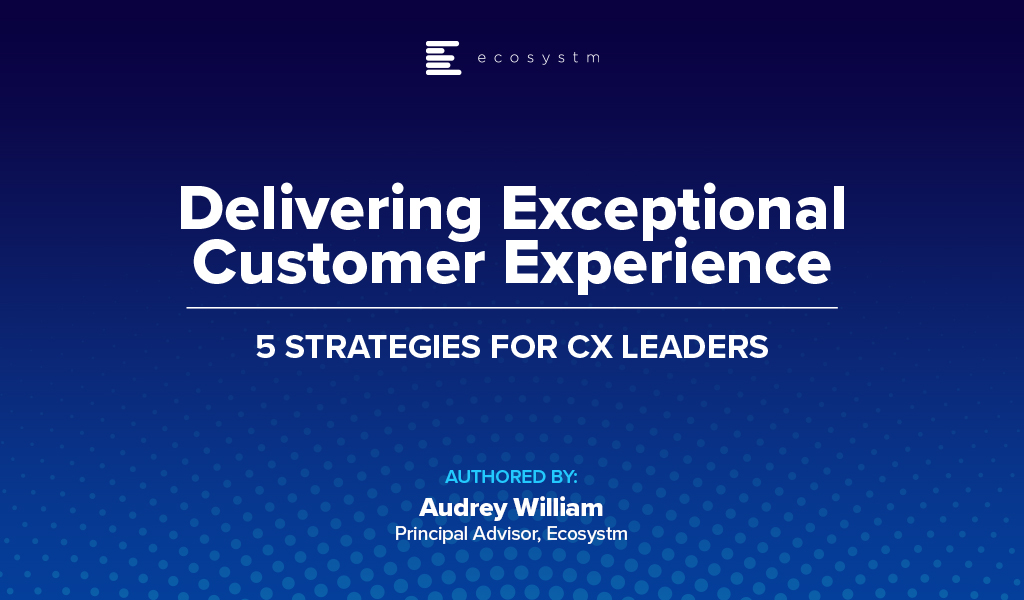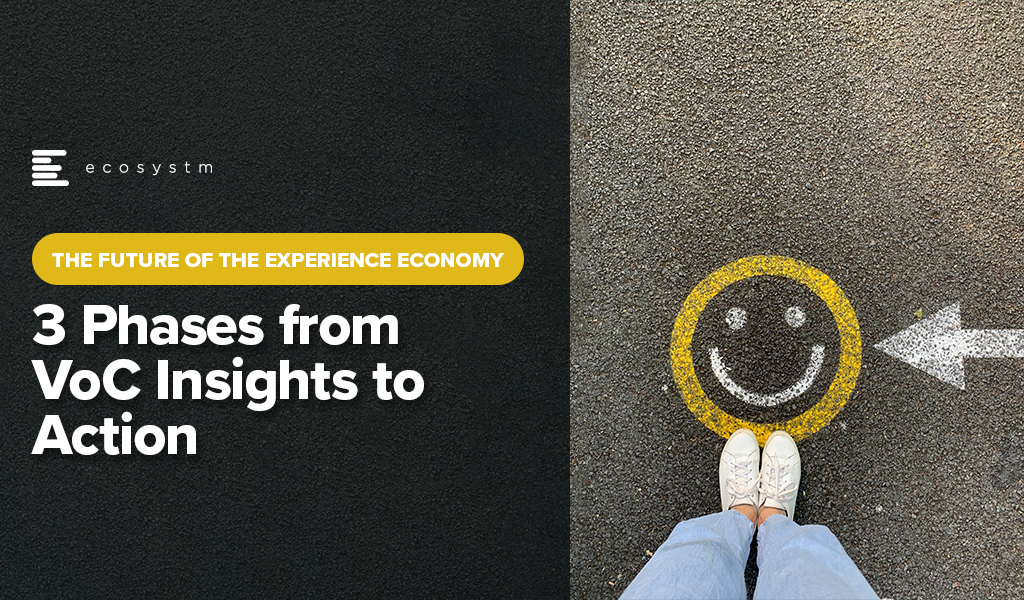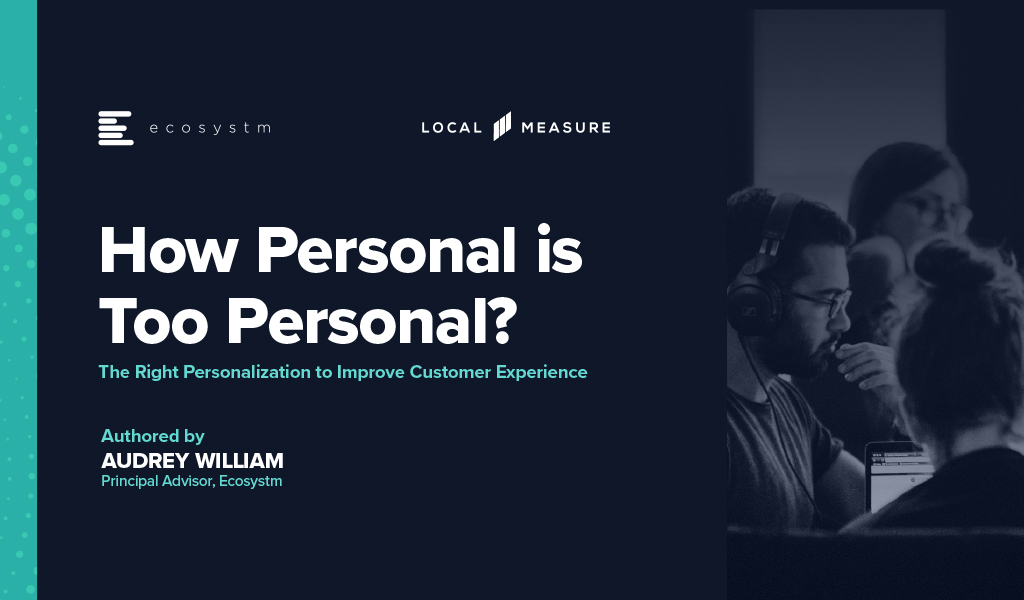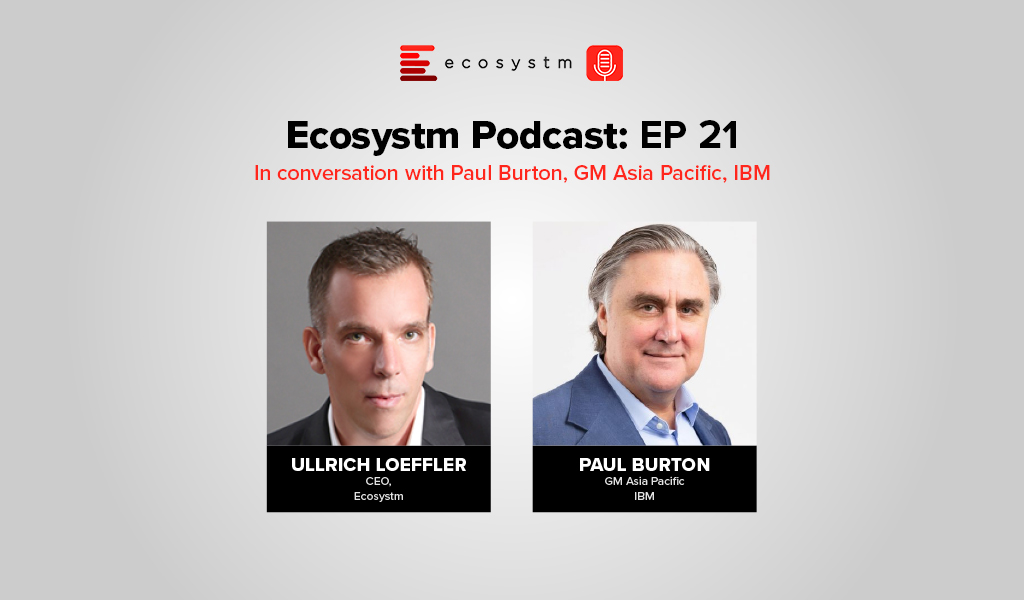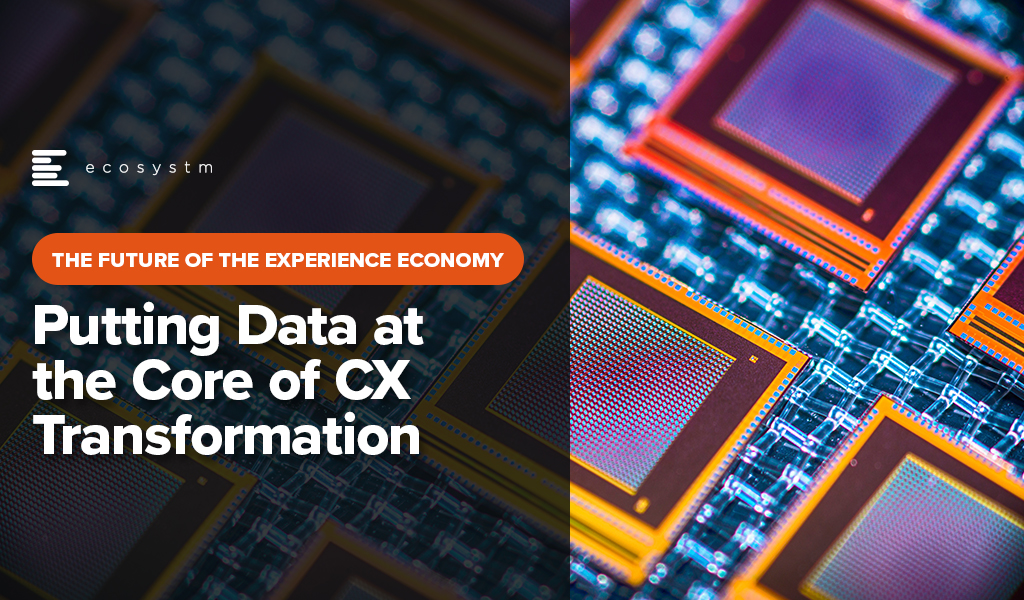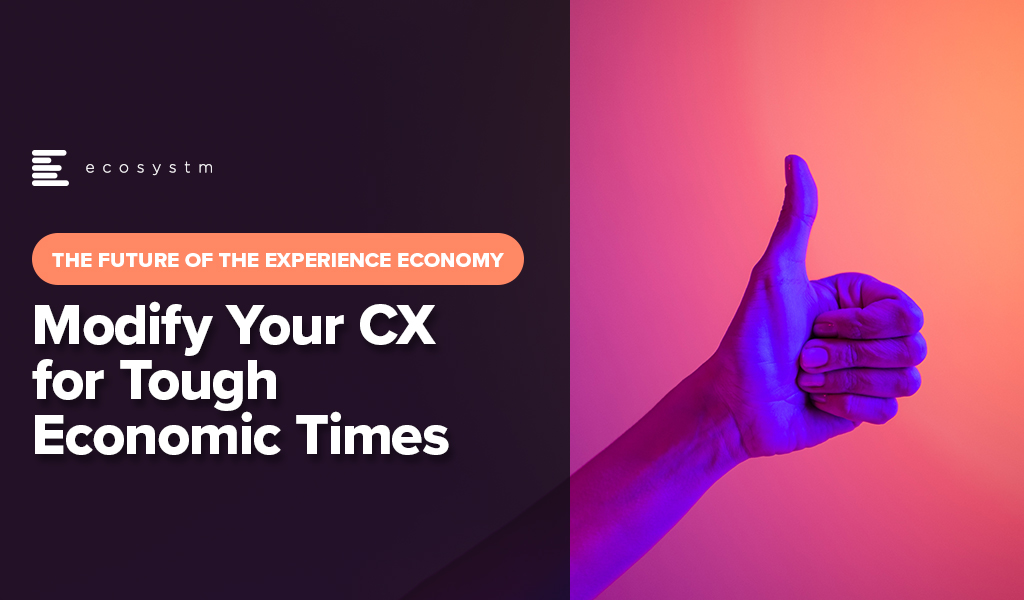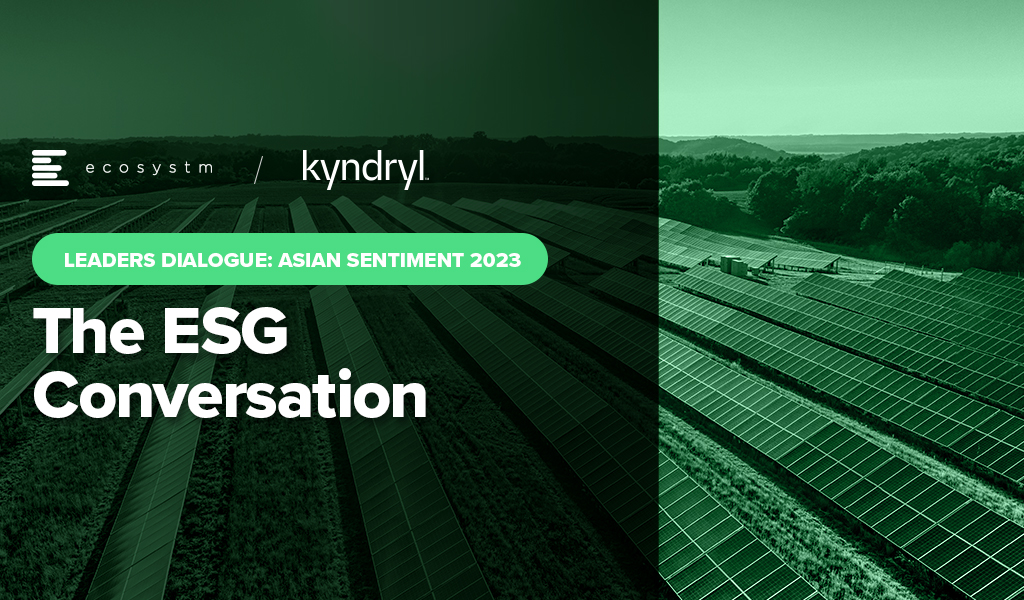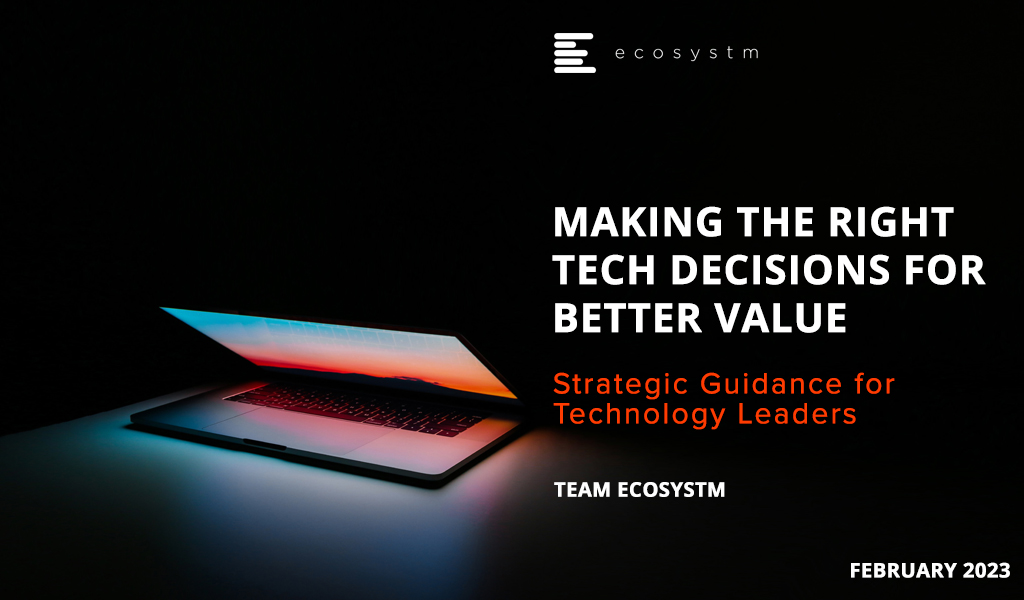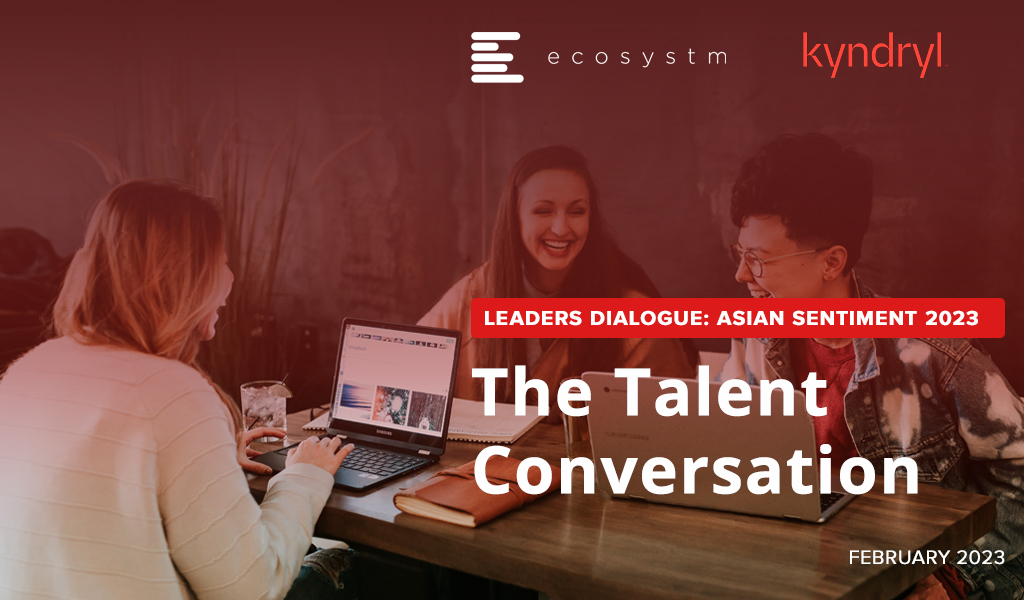Customer experience leaders have a lot on their plate: customer expectations are rising, running a contact centre is more expensive than ever, and cybersecurity threats are mounting.
Get the Ecosystm report to discover five strategies Australia and New Zealand leaders can adopt to deliver omnichannel customer journeys with ease. Learn how CX leaders in ANZ can overcome contact centre challenges, take a more innovative approach to transformation—and provide seamless customer experiences.
Download this whitepaper “Delivering Exceptional Customer Experience” created by Ecosystm, sponsored by Nuance and Microsoft, and get access to:
- Five strategies to transform your CX—each with its own checklist
- Insights into CX leaders’ biggest challenges and priorities
- Key results from the 2023 Ecosystm Future of CX Study

(Clicking on this link will take you to Nuance website where you can download the whitepaper)

In her earlier Ecosystm Insight Melanie Disse spoke about how to measure customer experience (CX) success through an effective Voice of Customer (VoC) program.
In this Ecosystm byte, Melanie talks about why every VoC program needs to have an Insight to Action framework at its core, to detect and drive continuous improvement opportunities and positively impact organisations’ bottom line.
Read on to find out more about the “Listen – Analyse – Act” VoC Insights to Action framework. Each phase of the framework has its own challenges, and the success of the entire framework depends on the quality of each phase.
Download 3-Phases-from-VoC-Insights-to-Action as a PDF

To get to the level of personalization to ensure customers keep returning to a brand and its people, organizations need to use all available data to focus on individual customers. By doing so, businesses can start to understand customers’ behavioral patterns and their sentiments allowing them to modify how they interact with them and serve them.
While organizations understand the power of personalization, many have an incomplete view of what personalization means. Organizations must plan the steps towards personalizing their customer experience, especially if they haven’t started the journey yet.
This whitepaper explores the steps customer experience (CX) leaders should take to drive the best possible outcomes in deepening their customer engagement, through hyperpersonalization.
Download this white paper “How Personal Is Too Personal? – The Right Personalization to Improve Customer Experience” created by Ecosystm in conjunction with Local Measure.
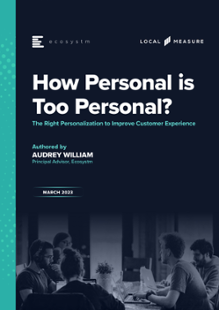
(Clicking on this link will take you to the LocalMeasure website where you can download the whitepaper)

Ullrich Loeffler, CEO of Ecosystm, sat down with Paul Burton, GM Asia Pacific at IBM, to discuss the latest trends and technologies shaping the business landscape in the Asia Pacific region.
Ullrich and Paul explored a range of topics, including:
- How organisations are leveraging technology to tackle market uncertainties and business priorities
- The importance of data & AI in driving business success
- How challenges such as data integration and quality can be mitigated
- The role of technology in supporting organisations’ sustainability ambitions
- The significance of partner ecosystems, collaborations, and knowledge-sharing to support innovation
Listen to the full conversation exclusively on Ecosystm Podcast
Podcast: Play in new window | Download (6.8MB)
Subscribe Spotify | Amazon Music | JioSaavn | Podchaser | RSS | More
In today’s digital world, data is an essential part of almost everything we do. From making informed business decisions to providing the best customer outcomes, data plays a crucial role in shaping organisations’ actions and strategies. With the increasing availability of customer data, companies can now gain valuable insights into customer behaviour, preferences, and expectations; and offer personalised experiences to build long-lasting relationships.
Ecosystm Principal Advisor, Audrey William talks about 5 things to keep in mind when working on your data strategy to improve customer experience.
- Build a data-driven CX culture. If you don’t have a Chief Experience Officer, appoint one.
- Understand your data needs. Blindly gathering data without evaluating significance or utilisation, can cost you.
- Evaluate your data repositories. Invest in a CDP or an Intelligent Data Platform for a unified view of customer data.
- Use Speech Analytics to truly understand your customer. Go beyond traditional metrics to gather data-driven insights.
- Aim to achieve hyperpersonalisation. Make it the goal and core of your data and customer strategies.
Read on to find more.
Download Putting Data at the Core of CX Transformation

During tough economic times, organisations need to be even more attentive to their customers’ needs and find creative ways to deliver high-quality customer experiences while keeping costs under control.
Tim Sheedy – VP Research, Ecosystm presents the best practices that organisations can use to modify their customer experience during these uncertain times.
- Bring back the empathy. While people might have stopped worrying about their health, economic concerns are real.
- Focus on customer retention. Customer attraction takes more effort and investments than customer retention.
- Invest in customer support. This can be done through digital touchpoints as well as in-person interactions.
- Continue to simplify the purchasing process. Even the slightest friction in the purchase process is enough to drive potential customers away.
- Focus on value over discounts. Customers look for value more than they look for discounts.
Read on to find out more.
Download Modify Your CX for Tough Economic Times as a PDF

We have seen a steady shift in people’s awareness of the environmental and social impacts of their actions. And this awareness, has led to a demand for sustainable and ethical practices from brands they interact with. Consequently, organisations are feeling the pressure to incorporate ESG factors into their business models to attract and retain customers; to nurture a purpose-drive talent pool; to address investor activism; and to comply with industry and country regulations.
At the Leaders Dialogue: Asian Sentiment 2023 conversation, Ecosystm Founder and Chairman, Amit Gupta; Ahmed Mazhari, President of Microsoft Asia; Padmashree (Paddy) Santosh, VP & Global Head of Learning, Diversity and Organisation Effectiveness at Olam Agri; and Luca Destefanis, Head of Marketing APAC at Kyndryl discussed the biggest drivers, opportunities, and challenges for Asian leadership in driving a sustainable future.
Here are the key takeaways:
- There has been a clear growth in a collective consciousness.
- ESG initiatives must start with a clear definition of the goals.
- It will require a multi-dimensional strategy that focuses on strategic alignment and people.
- ESG strategies need to be technology-enabled
- Ultimately, data is the key enabler of all ESG efforts
- Tech companies are focusing on expanding their ESG impact.
Read on to find out more.
Download The ESG Conversation as a PDF

Organisations are uncertain about how 2023 will shape up for them, amidst concerns about recessions, supply chain uncertainties, continued geopolitical volatility, energy crisis, and labour disruptions. At the same time, they have to continue to evolve their products and services, the customer experiences they deliver, and overall brand image.
If you are a tech leader, your first instinct would be to cut down on technology spend to align with your organisation’s cost optimisation strategy. And that is where you would make the first mistake – this is the time to invest in the right technologies to help your organisation face the uncertainties with agility.
Here are 5 things that you should keep in mind when shaping your organisation’s tech landscape in 2023.
- Focus on the shortest time to value. Choose a few smart digital improvements that are aligned with the strategic goals of the business and deliver value quickly.
- Drive better corporate outcomes through Sustainability programs. The transition to smart and sustainable digital assets and infrastructure should be a top priority for today’s technology leaders.
- Build resilience by improving value chain visibility. Digital technologies will continue to play an important role in providing visibility and insights across the value chains for risk management and resilience.
- Treat location data as a feedstock for AI & Automation. With the increasing importance of automation, especially to contemporary service models like digital twins and metaverse, incorporating spatial and location data into your strategy is essential for staying ahead of the competition and driving meaningful business outcomes.
- Find allies against cyber adversaries. Join the cybersecurity communities that exist in your geography and industry. Participate openly as possible so that lessons are shared quickly and widely. Don’t try to defeat the flood on your own.
Read on to find more.
Download Making the Right Tech Decisions for Better Value as a PDF

People management has always posed challenges for businesses and their HR leaders. Leaders have to address skills shortages, develop strategies to attract and retain talent, and promote inclusiveness in their policies. Today’s digital landscape – where there is a scarcity of digital skills across industries – makes it even harder. Leaders are now paying close attention to employee experience and retention, and topics such as digital workplace, hybrid work, flexibility, and wellness have made it to management discussions.
At the Leaders Dialogue: Asian Sentiment 2023 conversation, Ecosystm Founder and Chairman, Amit Gupta; Ahmed Mazhari, President of Microsoft Asia; Padmashree (Paddy) Santosh, VP & Global Head of Learning, Diversity and Organisation Effectiveness at Olam Agri; and Luca Destefanis, Head of Marketing APAC at Kyndryl discussed where Asia is facing their biggest challenges in talent management and how to mitigate them.
Here are the key takeaways:
- Digital skills shortage is real
- Purpose empowers employees
- The ‘Productivity Paradox’ needs addressing
- Hybrid Work is the accepted norm
- Technology & Culture differentiate the employee experiences
- Getting workplace transformation right is crucial
Read on to find out more about the future of talent in Asia.
Download The Talent Conversation as a PDF



